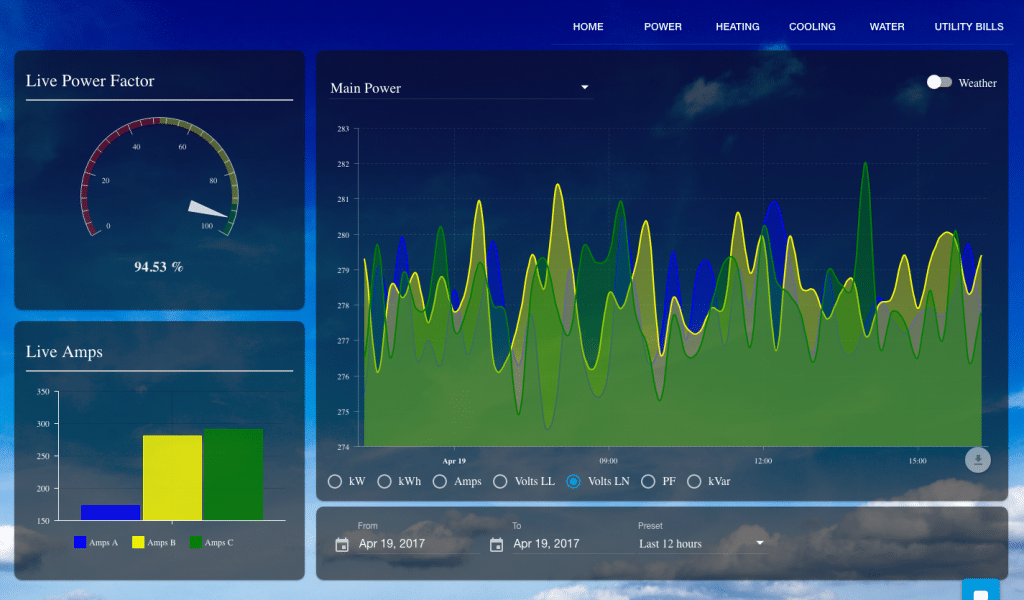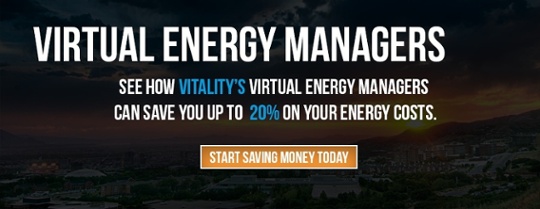Implementation of an Energy Management System is essential if you truly wish to reduce your energy consumption and save money. Without an Energy Management Service, you are just throwing darts in the dark, hoping one lands close. Without intimate knowledge and understanding, any project you undertake to reduce energy consumption can result in huge costs with no ROI.
What should an Energy Management System accomplish?
A good energy management system will accomplish many things, primarily among them, give you immediate access to live, accurate data. The ability to see live energy data, and trust its accuracy, is the first and most important goal in a good energy management system. Like with any system, the more data you have over time, the more insights you gain from it.
Stay up to date with energy trends. Subscribe to the Energy Wire Blog Today.
Let’s imagine a situation: Say you had a building on your campus that had much higher than normal demand charges, yet this building is an exact replica of another building with very similar occupancy and function and much lower bills. The difference in the demand should not be this large. So you install an energy management system like Vitality, and you start to build up data over time.
After you have data, you start to review it, and you notice that at 2 AM every single morning, you have a large spike in your demand.
What could that be? How is this happening?
Well, without your energy management system, you would have never even been made aware of the spike to begin with. Now that you have been made aware, you are capable of narrowing down the list of possibilities and investigating your buildings energy systems to find the issue. Upon further investigation, you discover that several air handlers were programmed incorrectly, and were powered down and then kicking on all at the same time in the middle of the night.
There is your problem! They should never kick on at the same time, much less in the middle of the night. This is actually a real story. One of our customers had this very problem, and they were able to identify it using the energy management system we installed for them. A good energy management system will provide you real-time, accurate data will alarm you of abnormalities in the data, and will allow you to view the data on its smallest scale, and on its largest, giving you the complete picture.
What is the first step to implementing?
The first step is metering solutions. You can’t manage what you can’t measure, right? Many people want to save energy, and then they immediately go to solar or a new LED lighting system. Sure, these will probably save you money over time, but what if there were other, more cost-effective procedures to put in place? What if you have a power factor issue? What if your outdated chiller is drawing 3x more energy than is actually needed to achieve the cooling you are looking for? These are all questions that cannot be answered without first knowing your data.
Successful metering requires a knowledgable energy manager (Click here to see affordable Virtual Energy Managers), capable of identifying all of the unique ways your facility consumes energy and creating a plan to monitor all of those unique data points. Most folks understand that we use water, gas, and power, but do they know what a BTU is or how it comes into play? How does gas usage affect the energy expenditure of the water you consume? Energy management can be complicated and very comprehensive at times, so having a good energy manager is essential.
What is the Second step?
You need to create a network in your facility that is independent of other systems within it, such as your BAS. Many a BAS have failed due to the load a metering structure puts on it. To ensure absolute integrity in your data, you must keep it as its own separate system. The method of communication you choose for your system is very important, as it will determine the overall success of your system.
The Third Step.
You need software that can gather and display your data; giving you access to historical data, and live data. You need to be able to compare it to your utility bills, allowing for utility bill verification. Many times, mistakes are made in your billing. These mistakes are not done purposefully, but they do happen, and you need the means of documenting errors so the utility can correct them.
Software is a very big part in your energy management system because without it you will not be able to efficiently and accurately identify problems in your energy consumption or be able to identify where actual energy conservation measures can be implemented. The software should be able to communicate with the majority of meters on the market, and it should be user-friendly, allowing for easy navigation. Software is useless if it is a pain to use.
It is essential to have an Energy Management Services. It needs to be installed correctly, tailored to your needs, with an energy manager who is capable of reading the data and identifying what you need to do with it. Saving energy is extremely difficult when you do not first understand it, and when you do not understand how to reduce the cost and quantity you consume.






